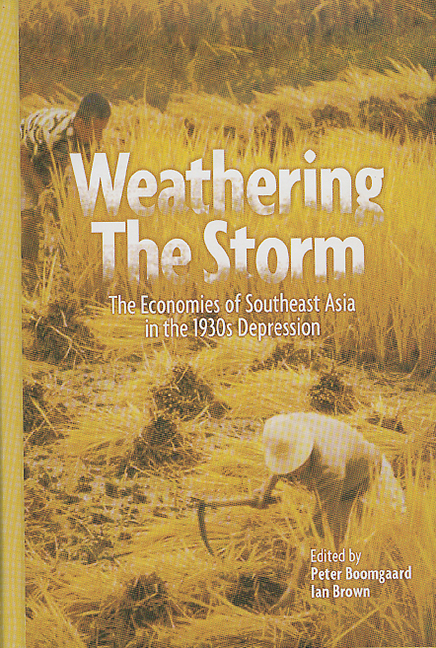1 - The Economies of Southeast Asia in the 1930s Depression: An Introduction
Published online by Cambridge University Press: 21 October 2015
Summary
THEME OR VARIATIONS
Southeast Asia's great depression — the pre-war depression — was a complex phenomenon. Even to answer the apparently simple question, ‘When did it start?’, would require an extended and highly nuanced analysis. This complexity arises from three main considerations. First, the very causes of the depression in Southeast Asia were highly complex. Second, economic structures and circumstances in the different parts of the region, despite important commonalities, were greatly varied. And finally, the impact of the depression (indeed any sharp contraction on the scale experienced by Southeast Asia in the early 1930s) was different for each socio-economic group — rural-dwellers as against townsfolk, landowners as against landless, creditors as against debtors. To rework a well-worn phrase, all generalizations about the causes, course, and impact of the 1930s depression in Southeast Asia are wrong — except the present one. The immediately following paragraphs will expand on the three considerations above.
The principal cause of the depression in Southeast Asia, most scholars would argue, lay outside the region — in the sharp contraction in economic activity in the industrial countries of North America and western Europe which began towards the end of the 1920s. Perhaps the most important mechanism by which the depression was transmitted from the advanced industrial economies to Southeast Asia was through a sharp contraction in demand for many of the region's major primary commodity exports. A notable example was the heavy fall in demand for the rubber produced on plantations and smallholdings in the Malay States, Sumatra, and Cochin- China, as automobile production contracted, notably in the United States at the close of the 1920s. But there were other mechanisms of transmission, perhaps most importantly the worldwide tightening of credit that arose, first from the sharp contraction of American foreign lending from mid- 1928 as funds were drawn into the fierce speculative boom on the New York stock exchange and then as the American authorities raised rates in an attempt to dampen the boom, and subsequently from the widespread collapse of banks across the United States and western Europe as the depression took hold.
- Type
- Chapter
- Information
- Weathering the StormThe Economies of Southeast Asia in the 1930s Depression, pp. 1 - 20Publisher: ISEAS–Yusof Ishak InstitutePrint publication year: 2001

